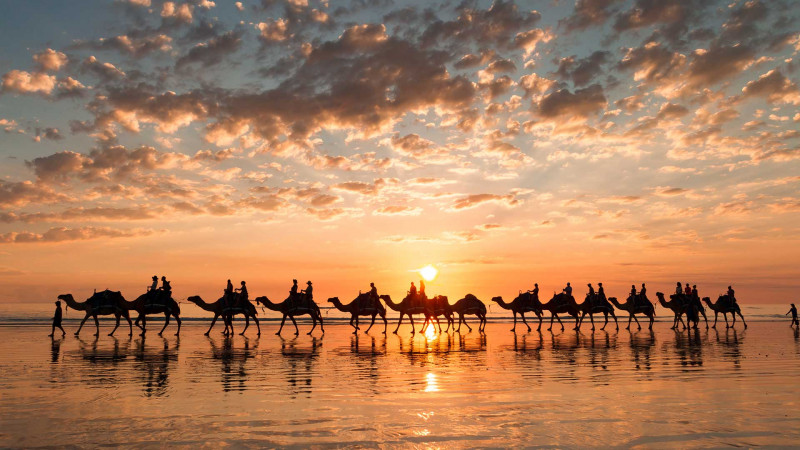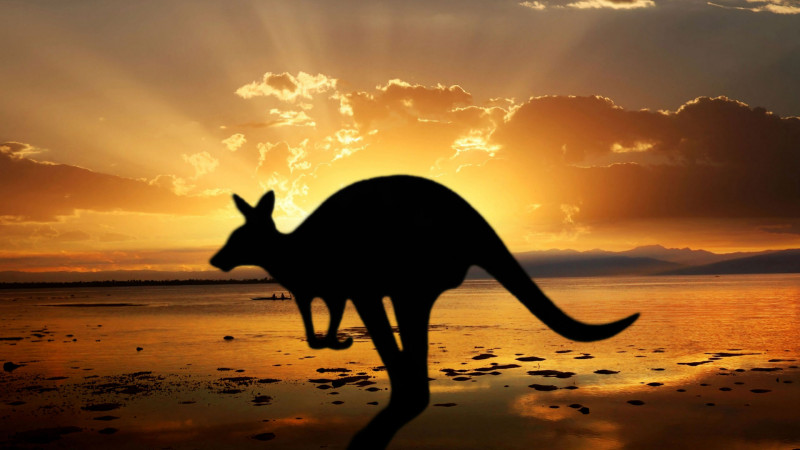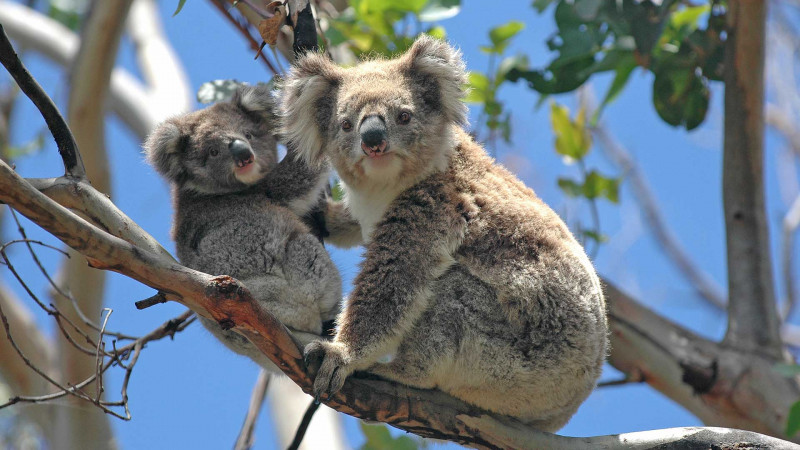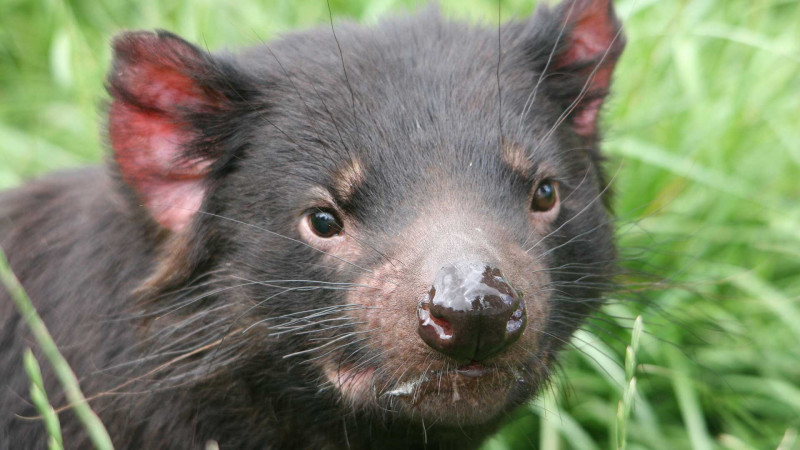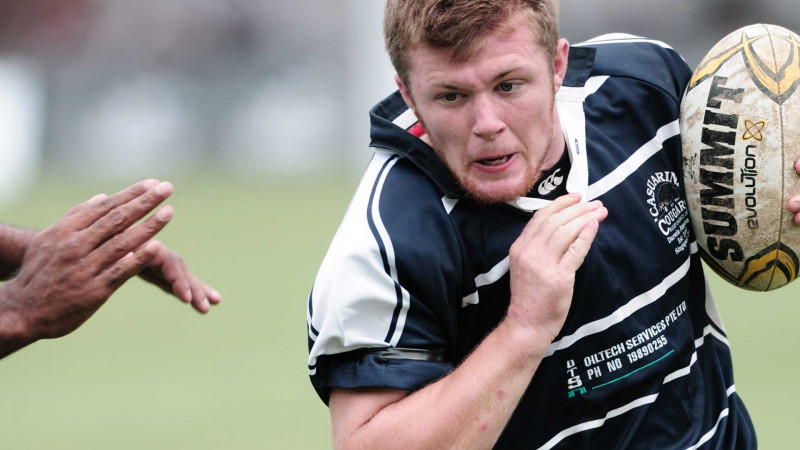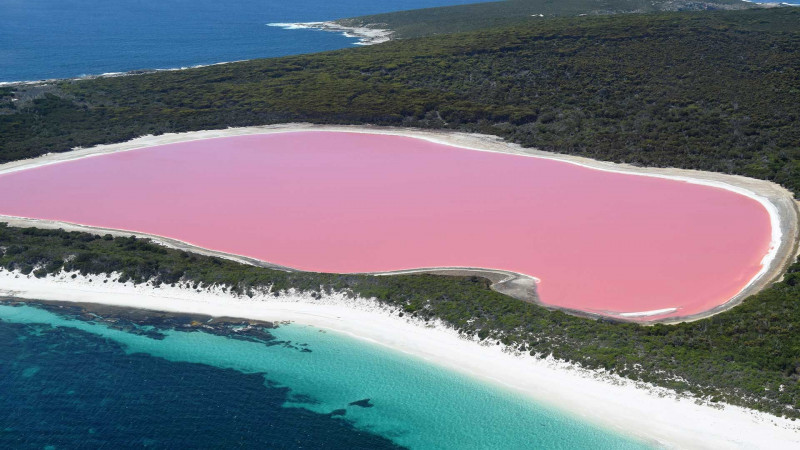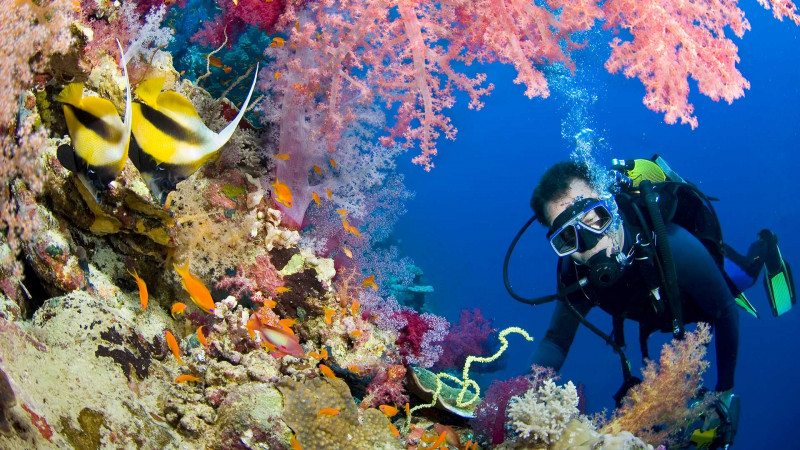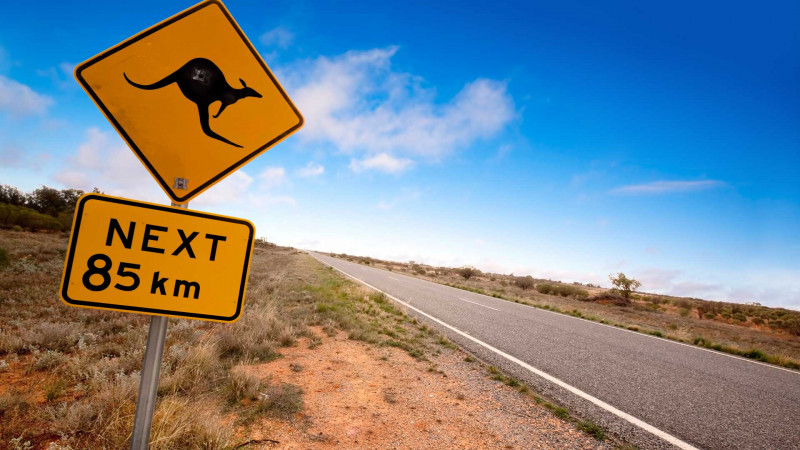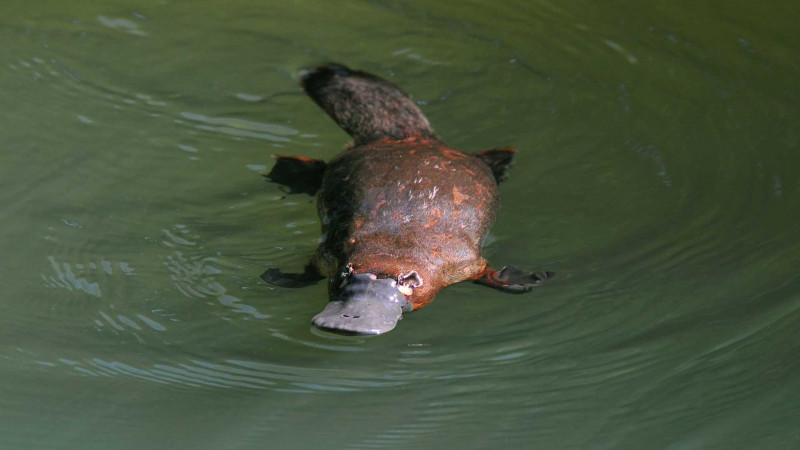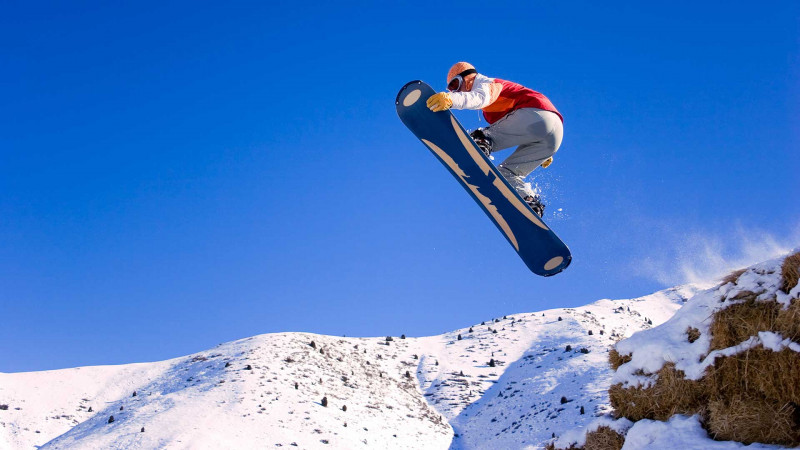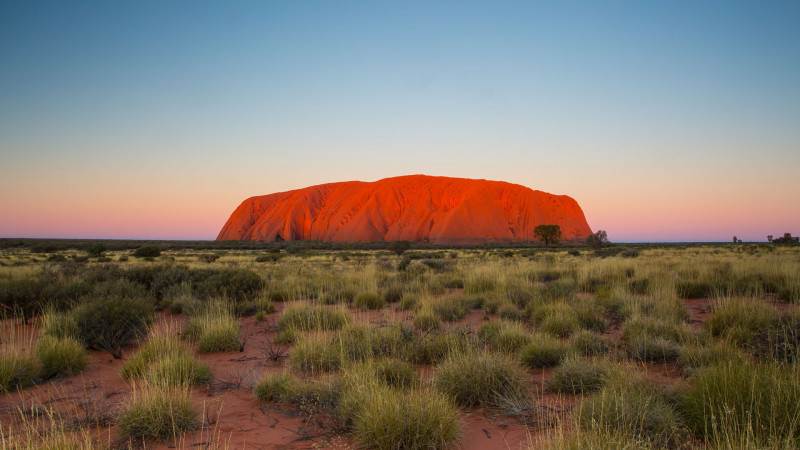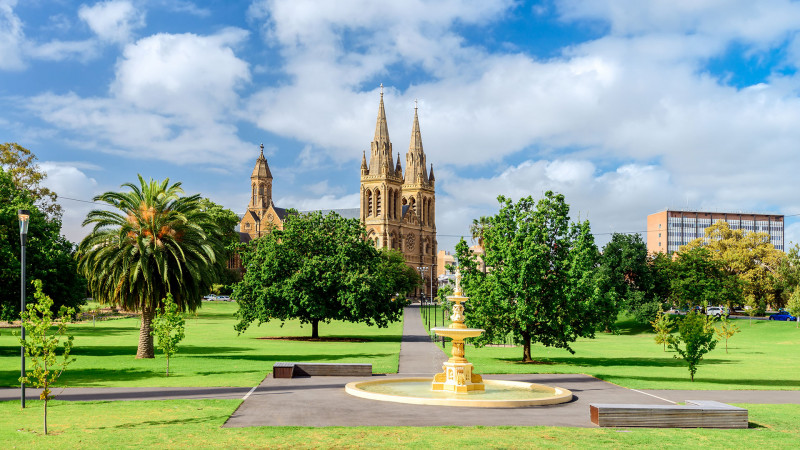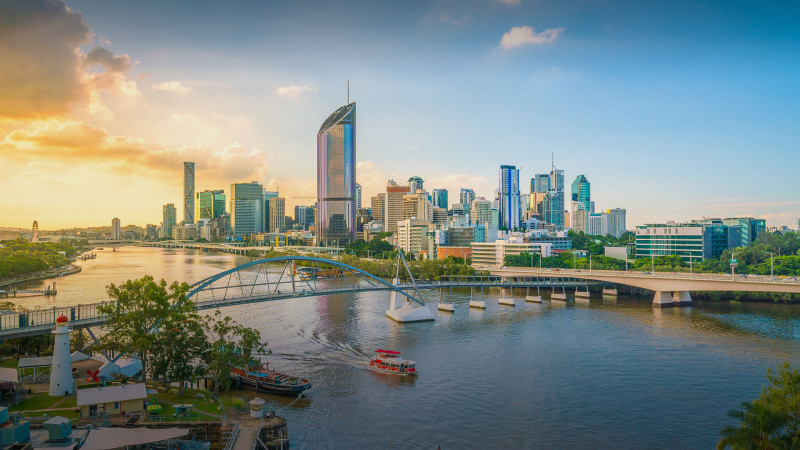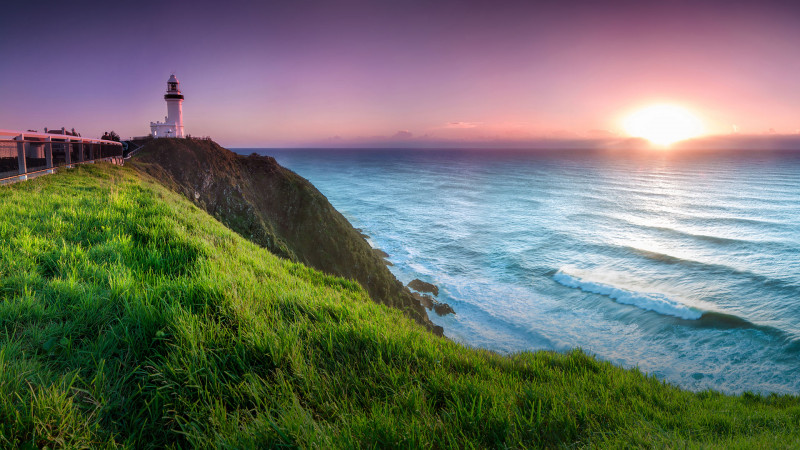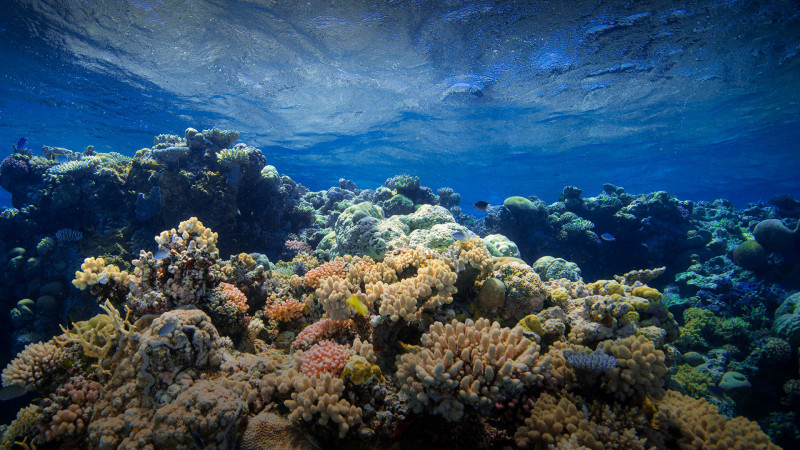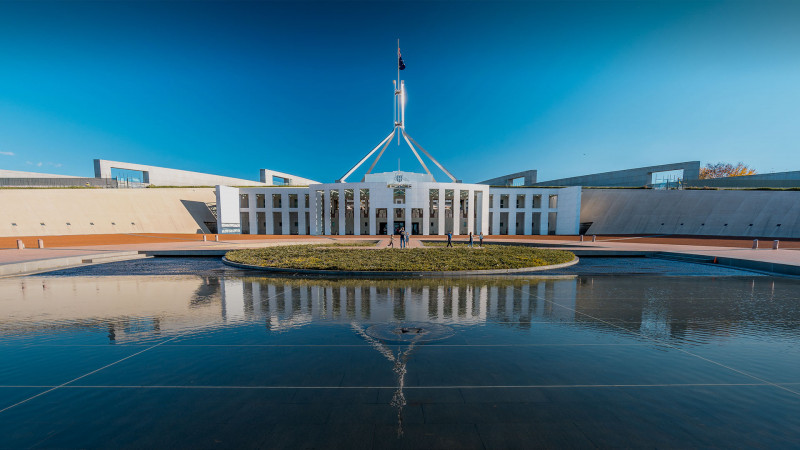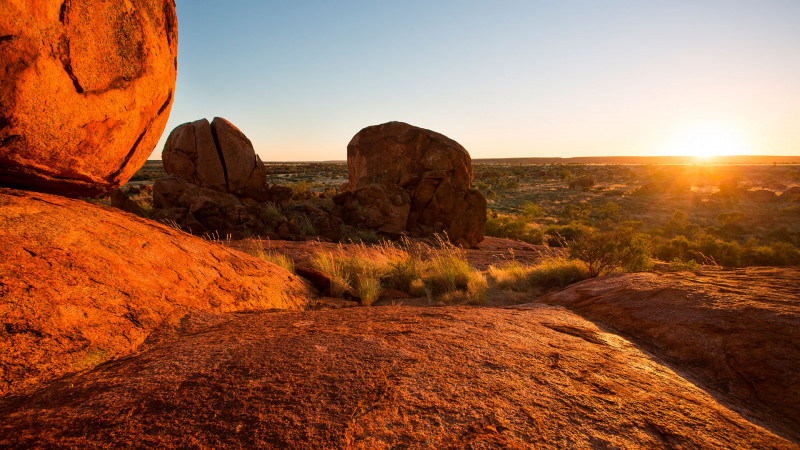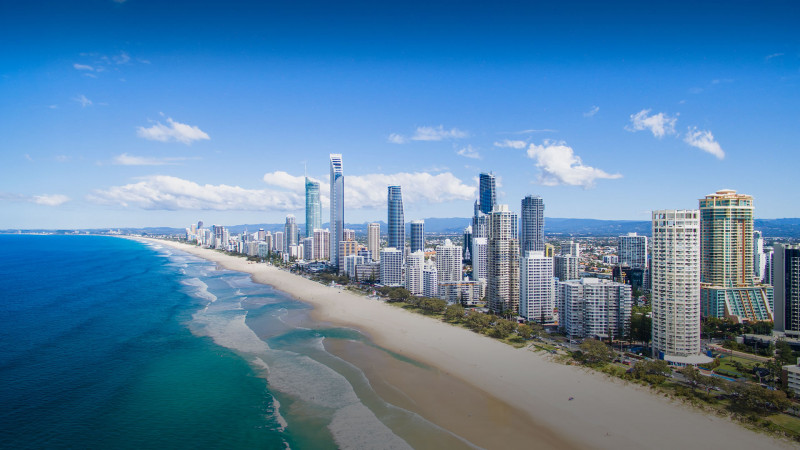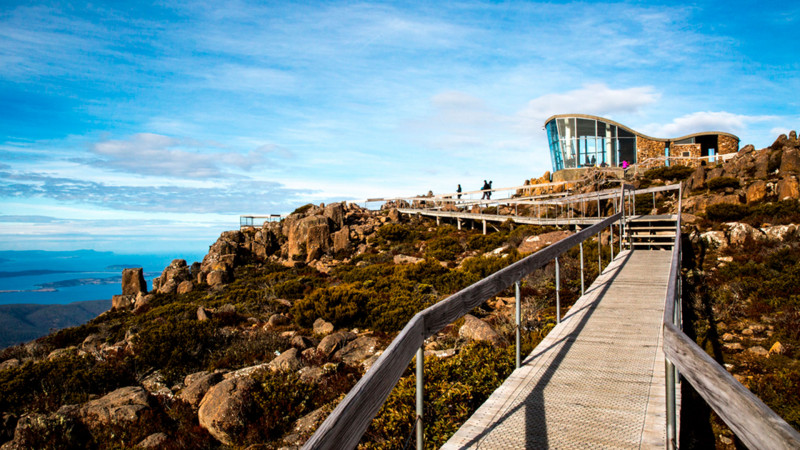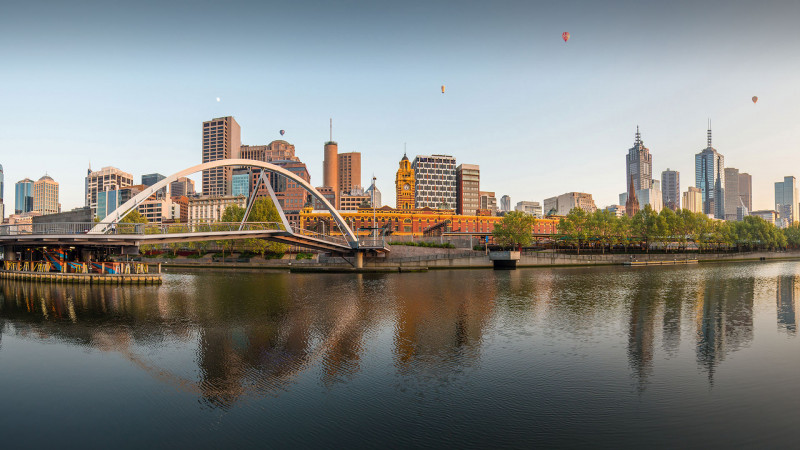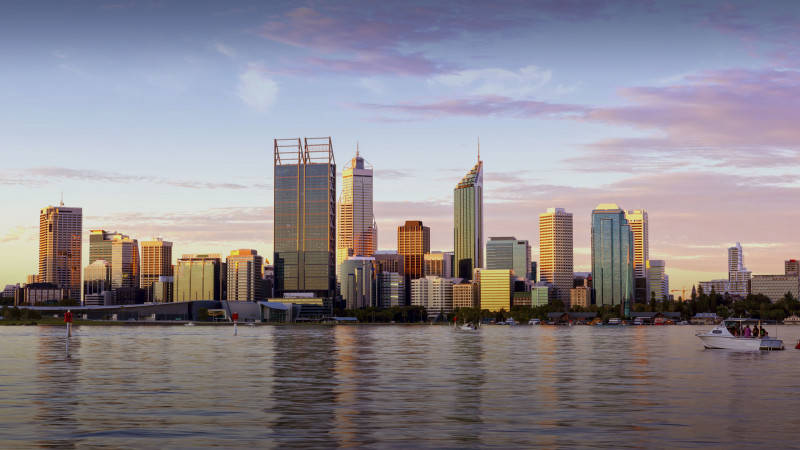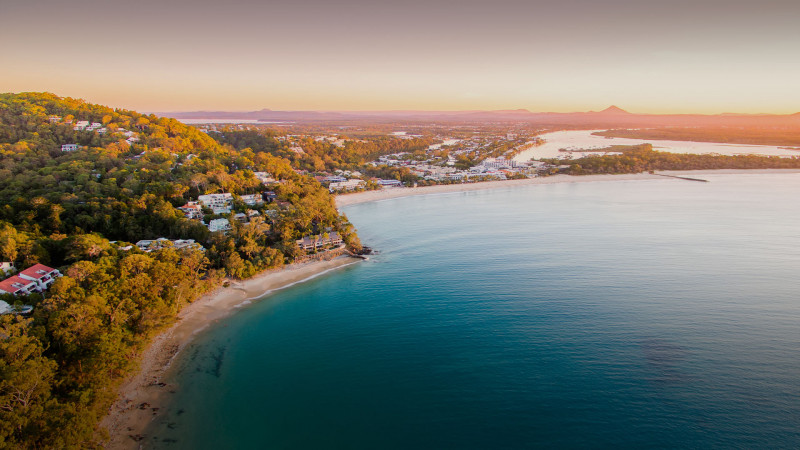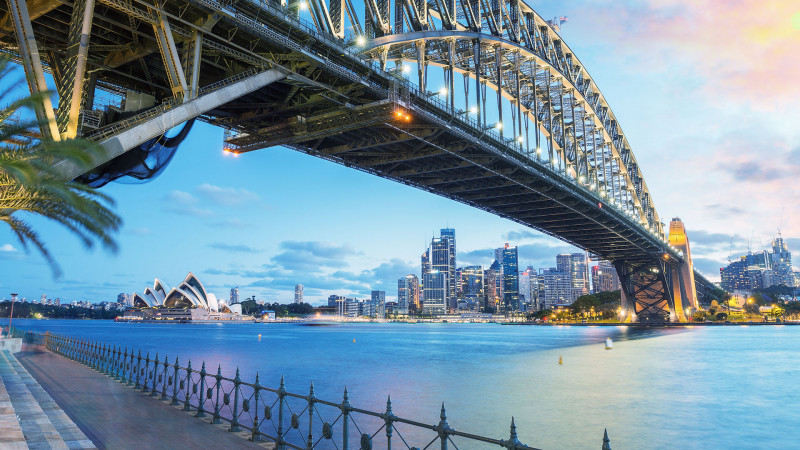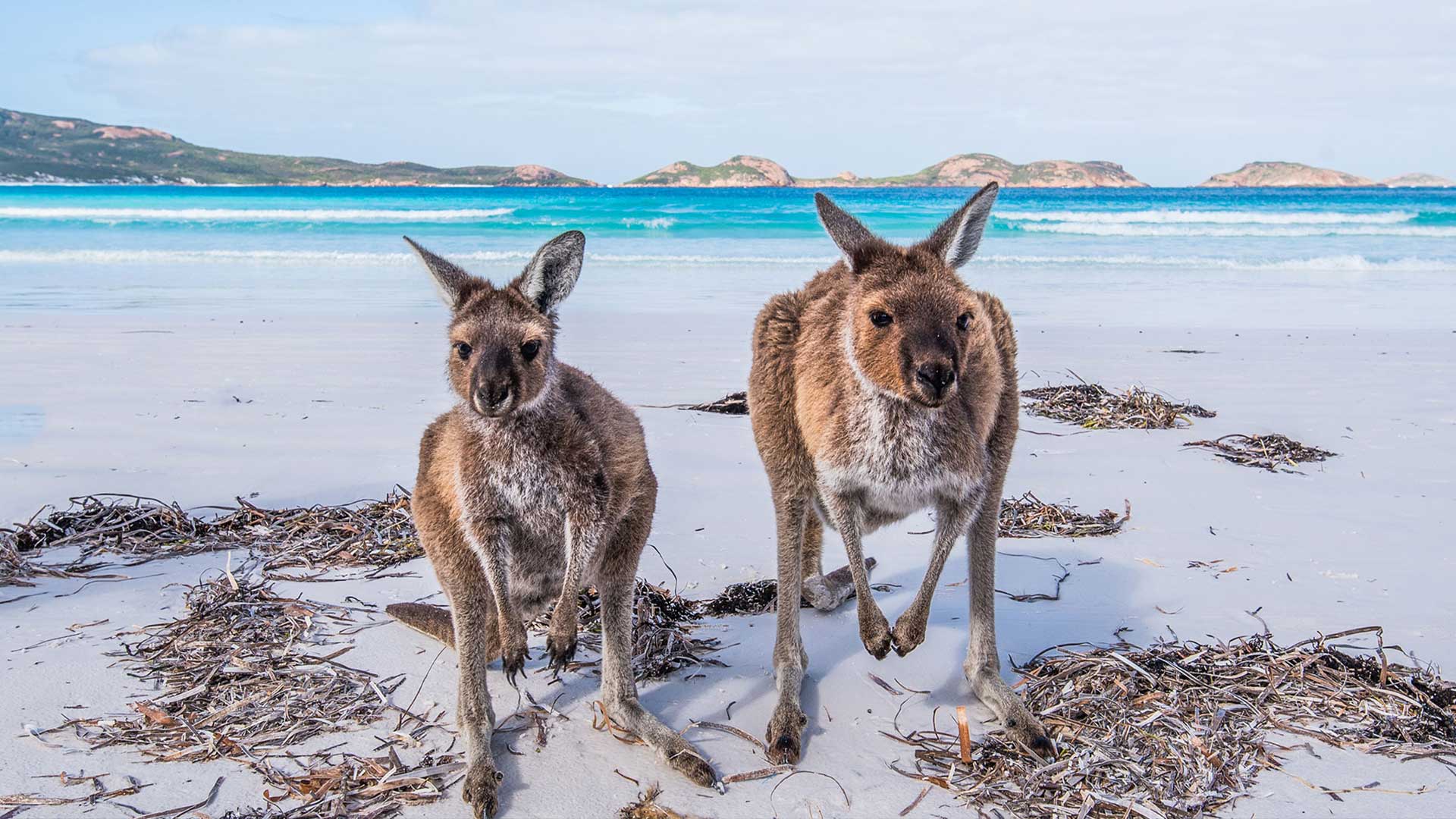
AUSTRALIA
Snapshot
Overview
Overview
› capital:
Canberra
› idioma:
English
› fundacao:
January 1st, 1901
› populacao:
24.702.900
(Sept/2017)
› area:
7.692.024 km²
(6th largest country in the world)
› fuso_horario:
Australia is divided into three separate time zones. In relation to Brasilia Time:
Perth: +11h
Adelaide: +12h30
Brisbane, Canberra, Gold Coast, Melbourne, Sydney: +13h
› moeda:
Australian Dollar (AUD)
› mao_de_transito:
English side
› voltagem:
220/240 volts
› custo_de_vida:
Annual estimate for a student: AU$ 19.830
Monthly estimate: AU$ 1.652,50
Monthly increase per spouse: 35% (AU$ 6.940 in a year)
Annual increase per child: 15% (AU$ 2.974,50)
› sistema_politico:
Constitutional monarchy and federal parliamentary democracy
› inflacao:
1.9%
(Jan/2018)
› desemprego:
5.60%
(Feb/2018)
› idh:
Position: 2nd
Score: 0,939
(2017)
› pib:
U$ 1.204.620.000
(2016)
› indice_liberdade_economica:
Position: 5th
Score: 80,9
(2018)
› indice_melhor_pais_para_viver:
Position: 1st
(2018)
› religiao:
Christian - predominantly Catholic (23%) and Anglican (13%)
(2018)
Climate
Climate
Due to continental dimensions, Australia’s climate varies greatly from region to region. Basically, there are two temperate zones south of the east and west coasts, a large tropical zone in the north of the country and vast arid and semi-arid areas moving away from the coasts. Southern temperatures are cooler than northern temperatures, which are generally quite hot.
Economy
Economy
Having agribusiness, mineral, energy and higher education for international students as their main sectors and also services accounting for 60% of GDP and four out of five jobs, Australia has one of the most open, transparent and diversified economies of the world with a highly skilled workforce.
The Australian economy has grown by an average of 3.47% a year since 1960, a result partially due to the country's political and social stability (one of the longest uninterrupted democracies in the world). In addition, with one of the lowest public debts among the 35 OECD (Organisation for Economic Co-operation and Development) countries, Australia is ranked by three of the top risk agencies as "triple A", the highest rate of investment. The main buyer of Australian products in 2017 was China (bought 29.6% of what was exported by Australia), followed by Japan (10.3%), South Korea (5.5%), India (4.4%) and Hong Kong (4%).
Government & Politics
Government & Politics
Australia is a constitutional monarchy whose government system is parliamentary democracy. Formally, the head of state is still the queen of Britain, who chooses a general governor to represent her. But who is actually in charge of the government is the prime minister, the leader of the political coalition with the highest party in the House of Representatives. The House, along with the Senate, compose the Federal Parliament, and the representatives of both Houses are elected by direct vote of the people at undefined year intervals. A similar system also occurs in all states and territories, in more than 560 locations scattered throughout the country.
History
History
The Australian continent is one of the oldest and has been inhabited by the aborigines and natives of the Torres Strait Islands for at least 60,000 years. Its colonization history officially begins in 1606, when Willem Jansz, Dutch captain, becomes the first European to step on Australian soil. For the next century the Netherlands was around, but they didn’t settle because they found the lands were inhospitable.
Unlike the British, the strongest navy power of the 18th century, which on April 28, 1770, led by Captain James Cook, landed where today is Botany Bay, south of Sydney, and took the new land in the name of the British Crown. Shortly after, after losing its main penal colony with the independence of the USA, Australia seemed like the natural way to empty the prisons of the king George III.
Thus, on May 13, 1787, a fleet of 11 ships left England and followed the Atlantic, arriving again at Botany Bay on January 18, 1788. As the area was not friendly set camp, they climbed up Port Jackson (Sydney Cove), permanently landing on January 26, today celebrated as Australia Day.
Flora & Fauna
Flora & Fauna
Australia has about 10% of the world's biodiversity and is in a group of 17 countries that together account for almost 70% of the world's species. While many species of Australian flora and fauna have ancestors originating in ancient Gondwana, the separation from the polar zone and the consequent increase in temperature, along with the millions of years of isolation, have made unique species develop in the continent. Altogether there are about 1 million native species, with more than 80% of the flowering plants, mammals, reptiles and frogs, as well as most of the fish and almost half of the birds, are unique to the country.
The kangaroo, as everyone knows, is the most emblematic animal, one of the symbols of the country. Mammal of the marsupial group, there are more than 60 different species, totaling more than 40 million kangaroos. Other famous marsupial cousins are wallabies, wallaroos and koalas, the latter with very peculiar eating habits - they only eat eucalyptus (low in nutrients) and don’t drink water - which makes them big sleepers: about 18 hours a day . Other local stars are the Tasmanian Devil, Dingo, Devil-Thorn, Emu and Kookaburras.
Remaining plant species from the Gondwana times can still be found in some parts of Tasmania’s temperate forests and in eastern Australia, as well as in the tropical forests north of the country. Some of them are among the oldest ecosystems in the world and have great historical and scientific value. Marine life is also priceless, with complex and exuberant scenery. Altogether there are 1700 species of coral, and the Great Barrier Reef in Queensland, over 2000 km long, is the world’s largest and most famous coral reef.
Cost of Living
Cost of Living
The annual cost of living in Australia, according to the Department of Immigration and Border Protection, is AU$19,830 per year (or AU$1,652.50 per month). For students intending to take their spouse to Australia the cost of living rises 35% per month (AU$6,940 annually). In case of couples with children, the annual cost rises 15%, being AU$2,974.50 per year for each child.
Below are some price estimates made by Austrade (Australian Trade and Investment Commission). Please note that they are only estimates and vary by cities and neighborhoods.
Accommodation
Hostels and Guesthouses - $90 to $150 per week
Shared room - $85 to $215 per week
On campus - $90 to $280 per week
Homestay - $235 to $325 per week
Rent (Property) - $165 to $440 per week
Other costs
Food (supermarket and eating out) - $80 to $280 per week
Gas and electricity - $35 to $140 per week
Telephone and internet - $20 to $55 per week
Public Transportation - $15 to $55 per week
Car (after purchase) - $150 to $260 per week
Leisure - $80 to $150 per week
Public Transport
Public Transport
Public transportation options available in Australia include buses, trains, light rails and ferries. Costs vary by location and type of transport. In general, there is integration between the different means of transport and concessionaires, which speeds up the travel time and lowers the cost. Local government websites are very comprehensive and provide all the necessary information about transportation options, schedules and costs. It is worth knowing the different tickets - daily, weekly and monthly - and find out which fits best your daily life, since in general they are cheaper than buying single tickets.
If you plan to drive in Australia, your Brazilian driver's license may be accepted in the first three months, but you need to translate it. Another option is to embark with an international driver's license, valid for one year, but that is not 100% accepted. If you are going to stay for more than three months, the ideal is to obtain an Australian driver's license in the state or territory where you reside.
The government encourages citizens to leave the car at home and use public transport or non-polluting vehicles, such as bicycles. This is why most cities offer lowered sidewalks and hundreds of kilometers of bicycle paths. In traffic, cyclists have basically the same rights and duties of car drivers, but with the requirement to use a helmet.
Nós
AUSTRALIA
Intercâmbio -no país- AUSTRALIA
What is your Australia? A country full of breathtaking landscapes and highly developed cities, Australia has everything for every taste: beaches, snow, deserts, lakes, islands, huge urban parks, mountains, cosmopolitan capitals, small villages, wine regions, worldwide cuisine, some of the best waves in the world and more. It's no coincidence that it has 19 sites listed by UNESCO as a historical heritage of mankind, among natural and cultural. Two factors that really help students to adapt in Australia are the climate and the excellent first-world infrastructure of the main cities, which makes day-to-day life safer and with great mobility, whether for living or traveling. A third peculiar feature of Australia is its cultural diversity, which has become a part of Australian daily life. Today, almost 30% of the population residing in the country was born outside Australia, which makes coexistence a quite rich experience without losing one of the main characteristics of the Australian people, which is their peaceful way of living. So, ready to discover your Australia?
Informações
-
Why to study in Austrália
When you are looking for a destination for your exchange program, in addition to initial matters such as budget and the language you want to learn or improve, two other points are very important to help you make your decision: lifestyle and relevance for the future. What kind of life do you wanna live during your exchange? What would you like to accomplish by the end of your experience? Australia has the sixth largest coastline in the world, where nine of the 10 most populous cities in the country are located. These cities, many of which are capital of their states, have a predominantly temperate climate, are modern, have first-world infrastructure and, at the same time, have been built valuing their natural beauties. Thus, the urban environments coexist in perfect harmony with the beaches, bays, lakes, rivers and parks, resulting in unique places, safe and great for outdoor activities. Not only that, Australia has a stable economy with full employment that enables the student to work 48 hours per fortnight (and full time during their vacations) and has dozens of institutions of excellency, from high school to universities, with internationally recognized qualifications, which only enriches the exchange program experience and the continuity of the student’s professional and academic career.
-
9 reasons to study in Australia
- International students can work 48 hours per fortnight (and full time during vacations)
- Third most popular international student destination in the world
- Options for every taste: 22 thousand courses and 1,000 educational institutions
- 7* of the top 100 universities in the world are Australian
- 5 of the 30 best cities for students in the world are in Australia
- Government annually invests $200 million in international scholarships
- The country has been awarded with 15 Nobel Prizes
- Australian laws guarantee quality education and protection for international students
- Climate similar to that of Brazil
*QS World University Rankings® 2018
-
Educational system in Australia
With 22,000 courses and 1,000 institutions, Australia has educational options for all tastes and needs, from Elementary to Middle School, through English and Vocational Education and Training (VET) courses. For the international students, there are basically three types of education: English, VET and Higher Education.
English Courses
Regardless of your English level, there is always a suitable program. General English is the most sought-after course by Brazilian students who land in Australia. After the exam on the first day, the school itself refers the student to the most appropriate level. They are:
- Basic
- Pre-Intermediate
- Intermediate
- Pre-Advanced
- Advanced
Schools also offer other options for English courses, such as:
- English for Academic Purposes: ideal for those who want to improve academic English, aiming to join a university or technical institute.
- Exam Preparation: ideal for those who want to prepare for English language proficiency tests, such as the IELTS (International English Language Testing System), TOEFL (Test of English as a Foreign Language) and Cambridge.
- English for Specific Purposes: ideal for those who want to learn English in specific areas of activity such as marketing, tourism and information technology, for example.
Vocational Courses (VET)
Vocational Education and Training are short or medium-term technical courses that prepare the student for the job market. TAFE (Technical and Further Education), the main reference, is a world-renowned institution ran by the government and is sought-after by both graduated international students and Australians who choose not to go to university. In addition to TAFE, hundreds of private schools and universities also offer VET courses with the same diplomas and certificates of attendance, many of which have partnerships with industry, promoting exchange and facilitating the student’s access to the job market.
Higher education
Seven of the top 100 universities in the world are Australian. And what's better: these institutions are used to receiving international students, providing highly diversified and culturally rich environments. Many universities recognize the certificates and diplomas of Australia's technical courses, making possible to skip disciplines the student has already seen. The three major university degrees are:
- Bachelor Degree (3 to 5 years)
- Masters Degree (1 to 2 years)
- Doctoral Degree “PhD” (3 to 6 years)
-
About Australia
Australia consists of 6 states (New South Wales, Queensland, South Australia, Tasmania, Victoria and Western Australia) and 2 territories (Northern Territory and Australian Capital Territory), the latter, located in New South Wales, was chosen in 1908 to be the capital of the country and was given the name of Canberra, “meeting point” in aboriginal. With 7.69 million km2 - 3700 km from north to south and 4000 km from east to west -, the country is the sixth largest on Earth, just behind Brazil. The Australian continent is also one of the oldest and has been inhabited by men for at least 40,000 years (perhaps 60,000 years). These first inhabitants are the aborigines and the Natives of the Torres Strait island. Currently, more than 28% of the Australian resident population was born outside the country and more than 300 languages are spoken in Australian homes. Not surprisingly, Australia is known for its multiculturalism and for the diversity of their people.
-
Working in Australia
In Australia, as soon as classes begin, the student can work 48 hours per fortnight (and full time during vacations). In order to do that, it’s important to open a student account at a bank and make the Tax File Number, a record on the Australian Taxation Office that will allow you to get paid by the employer and have your income tax in order. The first jobs, in general, are part-time jobs in cafes, restaurants, pubs and hotels. Depending on the establishment, you will need to obtain specific licenses such as RSA (Responsible Service of Alcohol) or RSG (Responsible Gambling Services), the first to serve alcohol and the second to work in places where there are gambling. WEST 1 can guide you on how to get them. Another common area among students and that also requires certification, the Green Card, is construction. For students that want to provide services without employment relationships, ie intending to work for different clients, a business registration (legal person) with the Australian Taxation Office called ABN (Australian Business Number) is required. Electricians, plumbers, journalists and web designers are some examples of professionals who are self-employed.
-
Australian Culture
All major Australian cities have their own art scene, symphony orchestra, art galleries, museums, festivals and permanent cultural schedule. Due to the country’s continental dimensions and the distance from Europe and the United States, major international attractions, when they land in Australia, usually pass through major cities, extending the tour to New Zealand as well. The events happen all year round, but it's during summertime that things really start to get hot with hundreds of festivals scattered across the country. Great national and international names invade the stages of Australia, while the population and millions of tourists go to beaches and streets, making the season a great party. Nellie Melba (1861-1931), one of the greatest opera singers of all time, was Australia's first big name to make success overseas, but it’s also the least known by the non-specialized audience, unlike stars like Nick Cave, Midnight Oil, Men at Work, Hoodoo Gurus, INXS, Silverchair, Kyle Minogue, Jimmy Barnes, John Butler Trio, Keith Urban, The Cat Empire, Jet, Wolfmother, among others, in addition, of course, AC/DC, the best known and most successful Australian band in history with more than 200 million albums sold since it was founded in 1973. In the movies, many actors came from Australia, such as Mel Gibson, Geoffrey Rush, Toni Collette, Rose Byrne, Cate Blanchett, Hugh Jackman, Heath Ledger and Eric Bana. Russell Crowe, Nicole Kidman, Guy Pearce, Hugo Weaving and Naomi Watts are other stars who, like Mel Gibson, were not born in Australia but have their lives and careers attached to the country. Among the greatest worldwide successes in Australian cinema, Mad Max (1978), Crocodilo Dundee (1986), The Adventures of Priscilla, Queen of the Desert (1994), Muriel’s Wedding (1994), Shine (1995) and Australia (2008) stand out.
-
Australian Tourism
Tourism is one of Australia's largest industries, generating a revenue of $37.9 billion for the economy in 2015-16 and employing almost one million people. For every dollar spent on tourism, 46 cents goes to regional areas, strengthening tourism uniformly across metropolitan regions and local communities. Not surprisingly, Australia's top destinations are scattered all over the country:
- Opera House and Harbour Bridge in Sydney
- Cafes, bars and cultural life of Melbourne
- Great Ocean Road and the Twelve Apostles in Victoria
- Sunny Beaches of Gold Coast and Sunshine Coast
- Great Barrier Reef in Cairns and Whitsundays
- Alice Springs, in the desert, which serves as access to Uluru
- Vineyards of Barossa Valley, Margaret River and Hunter Valley
- Rare vegetation of Fraser Island
- Sand Dunes of Kangaroo Island
- Paradisiacal Landscapes of Perth and Broome
Australia is interconnected by 815,000 km of highway and 42,000 km of railroad. On short trips, train, bus or car are the most used options, since the highways, whether main or secondary, are very safe and of great quality; and the rail network is very efficient. For longer distances, domestic flights by plane are well taken into account, especially with the companies called "budget". Another very common option in Australia are the motorhome or campervan trips, which have bed, stove, mini-fridge and space, on average, for two to six people. There are many renting companies and parking lots everywhere. During the summer it’s important to book in advance as the campgrounds and parking lots fill up.
Passo a passo por que estudar na AUSTRALIA
English and vocational courses
-
City, school and course
1. CHOOSING THE CITY, SCHOOL AND COURSE
The first step as soon as you define the destination for your exchange is to choose the city based on your personal profile, for each city has a specific style. After defining the city it’s time to make plans about the school. Knowing details about the courses, curriculum and support offered are very important when establishing which school will be offered. Price may be a relevant factor for some students but it should be noted that schools with attractive prices might not always provide a good structure and support for students.
Próximo -
Pre Enrolment and bookings
2. PRE-ENROLLMENT AND PRE-BOOKING SERVICES
After choosing the school it’s necessary to enroll in the course and book services such as: accommodation (usually a Homestay in the first month), contracting health insurance for the duration of the course, airfare and, if the student wants, booking transfer services from the airport to the accommodation. A signed enrollment form and passport are essential for completing this step.
AnteriorPróximo -
Payment
3. CONFIRMATION OF BOOKINGS AND PAYMENT
After reserving accommodation, airfare and health insurance, along with the school's enrollment, it’s time to pay for each contracted service.
AnteriorPróximo -
Visa
4. DOCUMENTATION FOR THE VISA
With full assistance from WEST 1, it’s time to separate all the necessary documentation to apply for the Australian student visa. As part of the student visa review process, a medical examination with a doctor accredited by the Australian Embassy in Brazil may be requested.
AnteriorPróximo -
Visa
5. VISA APPLICATION
With a valid passport, it’s time to apply for an Australian student visa at least 45 business days prior to the departure date on your ticket. However, to avoid any inconveniences, WEST 1 recommends that the application be made 60 business days in advance, especially during the period from November to February.
AnteriorPróximo -
Pre-Boarding
6. PRE-BOARDING BRIEFING
The time is coming to board to Australia and to help you keep your anxiety and the butterflies in your stomach under control, WEST 1 prepares a Pre-Boarding Briefing. In this event, we will address all your concerns so you can have a smooth trip, from information on what to carry in your luggage, how to behave in transit, customs, your first few days in Australia and much more!
AnteriorPróximo -
Off to Australia
7. FAREWELLS
It's time for boarding to the long-awaited exchange in Australia and WEST 1 will provide a farewell kit for you to have a smooth and comfortable trip.
Anterior
- 1
- 2
- 3
- 4
- 5
- 6
- 7
Higher Education
-
City, school and course
1. CHOOSING THE CITY, SCHOOL AND COURSE
The first step as soon as you define the destination for your exchange is to choose the city based on your personal profile, for each city has a specific style. After defining the city it’s time to make plans about the school. Knowing details about the courses, curriculum and support offered are very important when establishing which school will be offered. Price may be a relevant factor for some students but it should be noted that schools with attractive prices might not always provide a good structure and support for students.
Próximo -
PRE-ENROLLMENT
2. SUBMISSION OF PRE-ENROLLMENT DOCUMENTATION
After choosing the College it’s necessary to enroll in the course. Documents such as signed enrollment form, proficiency test, previous course certificates, and passport are essential for completing this step.
AnteriorPróximo -
Other services
3. PRE-BOOKING SERVICES
After being accepted by the school it’s necessary to book services such as: accommodation (usually a Homestay in the first month), contracting health insurance for the duration of the course, airfare and, if the student wants, reservation of transfer services from the airport to the accommodation.
AnteriorPróximo -
Payment
4. CONFIRMATION OF BOOKINGS AND PAYMENT
After reserving accommodation, airfare and health insurance, along with the school's enrollment, it’s time to pay for each contracted service.
AnteriorPróximo -
Visa
5. DOCUMENTATION FOR THE VISA
With full assistance from WEST 1, it’s time to separate all the necessary documentation to apply for the Australian student visa. As part of the student visa review process, a medical examination with a doctor accredited by the Australian Embassy in Brazil may be requested.
AnteriorPróximo -
Visa
6. VISA APPLICATION
With a valid passport, it’s time to apply for an Australian student visa at least 45 business days prior to the departure date on your ticket. However, to avoid any inconveniences, WEST 1 recommends that the application be made 60 business days in advance, especially during the period from November to February.
AnteriorPróximo -
Pre-Boarding
7. PRE-BOARDING BRIEFING
The time is coming to board to Australia and to help you keep your anxiety and the butterflies in your stomach under control, WEST 1 prepares a Pre-Boarding Briefing. In this event, we will address all your concerns so you can have a smooth trip, from information on what to carry in your luggage, how to behave in transit, customs, your first few days in Australia and much more!
AnteriorPróximo -
Off to Australia
8. FAREWELLS
It's time for boarding to the long-awaited exchange in Australia and WEST 1 will provide a farewell kit for you to have a smooth and comfortable trip.
Anterior
- 1
- 2
- 3
- 4
- 5
- 6
- 7
- 8
#PARTIUAUSTRALIA
Perguntas Frequentes
-
How far in advance should I start planning my study abroad program in Australia?
The sooner you start planning your exchange, the better you are prepared. WEST 1 directs you to start planning your exchange at least three months before the date you want to start your course. This is the minimum time required to complete the entire process of the preparations with ease.
It is important to note that, depending on your nationality, the deadline requested by the Australian Embassy for approval of the study visa is up to 45 days after the delivery of all required documentation.

